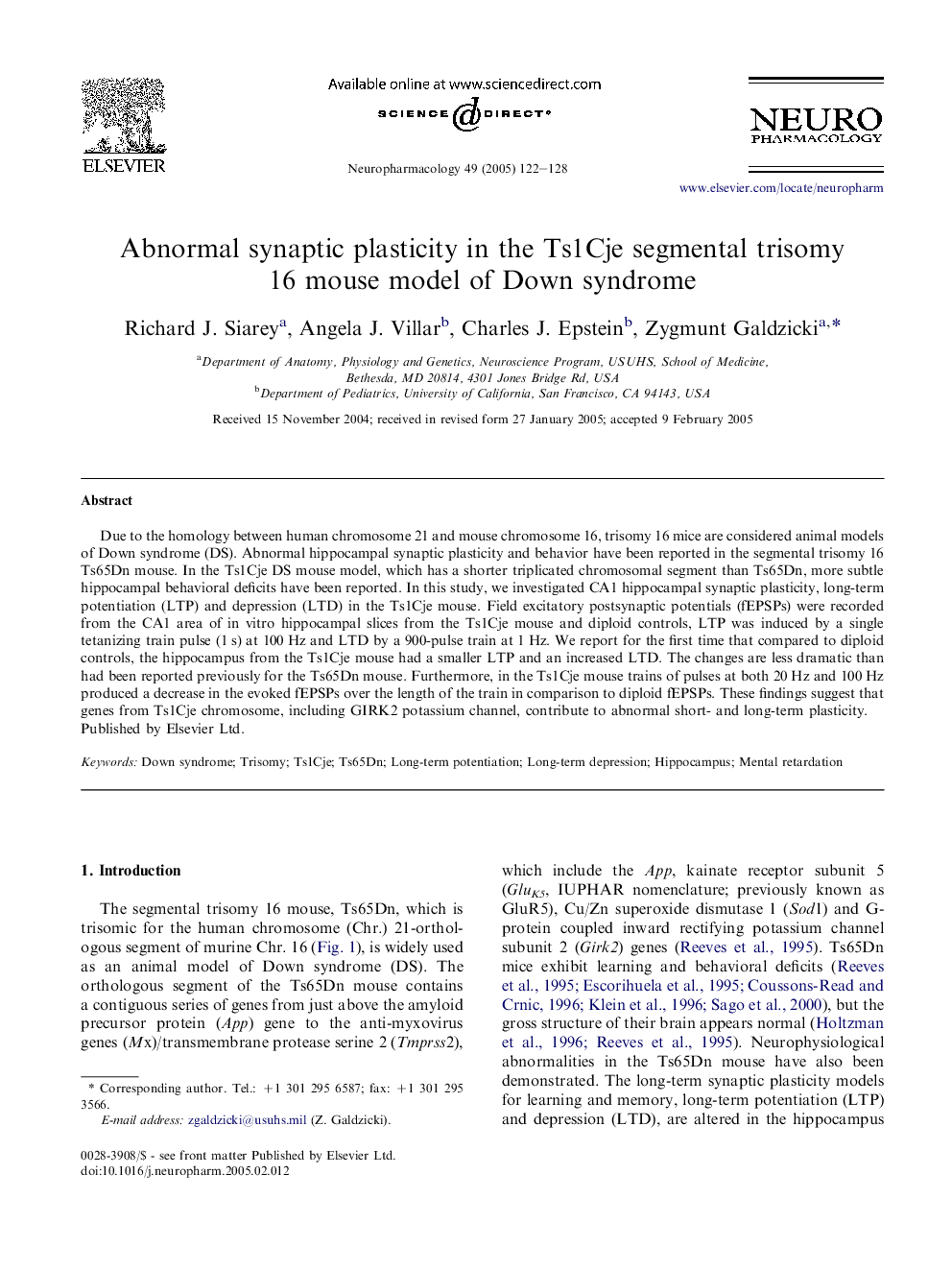| کد مقاله | کد نشریه | سال انتشار | مقاله انگلیسی | نسخه تمام متن |
|---|---|---|---|---|
| 8998223 | 1115610 | 2005 | 7 صفحه PDF | دانلود رایگان |
عنوان انگلیسی مقاله ISI
Abnormal synaptic plasticity in the Ts1Cje segmental trisomy 16 mouse model of Down syndrome
دانلود مقاله + سفارش ترجمه
دانلود مقاله ISI انگلیسی
رایگان برای ایرانیان
کلمات کلیدی
موضوعات مرتبط
علوم زیستی و بیوفناوری
علم عصب شناسی
علوم اعصاب رفتاری
پیش نمایش صفحه اول مقاله

چکیده انگلیسی
Due to the homology between human chromosome 21 and mouse chromosome 16, trisomy 16 mice are considered animal models of Down syndrome (DS). Abnormal hippocampal synaptic plasticity and behavior have been reported in the segmental trisomy 16 Ts65Dn mouse. In the Ts1Cje DS mouse model, which has a shorter triplicated chromosomal segment than Ts65Dn, more subtle hippocampal behavioral deficits have been reported. In this study, we investigated CA1 hippocampal synaptic plasticity, long-term potentiation (LTP) and depression (LTD) in the Ts1Cje mouse. Field excitatory postsynaptic potentials (fEPSPs) were recorded from the CA1 area of in vitro hippocampal slices from the Ts1Cje mouse and diploid controls, LTP was induced by a single tetanizing train pulse (1Â s) at 100Â Hz and LTD by a 900-pulse train at 1Â Hz. We report for the first time that compared to diploid controls, the hippocampus from the Ts1Cje mouse had a smaller LTP and an increased LTD. The changes are less dramatic than had been reported previously for the Ts65Dn mouse. Furthermore, in the Ts1Cje mouse trains of pulses at both 20Â Hz and 100Â Hz produced a decrease in the evoked fEPSPs over the length of the train in comparison to diploid fEPSPs. These findings suggest that genes from Ts1Cje chromosome, including GIRK2 potassium channel, contribute to abnormal short- and long-term plasticity.
ناشر
Database: Elsevier - ScienceDirect (ساینس دایرکت)
Journal: Neuropharmacology - Volume 49, Issue 1, July 2005, Pages 122-128
Journal: Neuropharmacology - Volume 49, Issue 1, July 2005, Pages 122-128
نویسندگان
Richard J. Siarey, Angela J. Villar, Charles J. Epstein, Zygmunt Galdzicki,